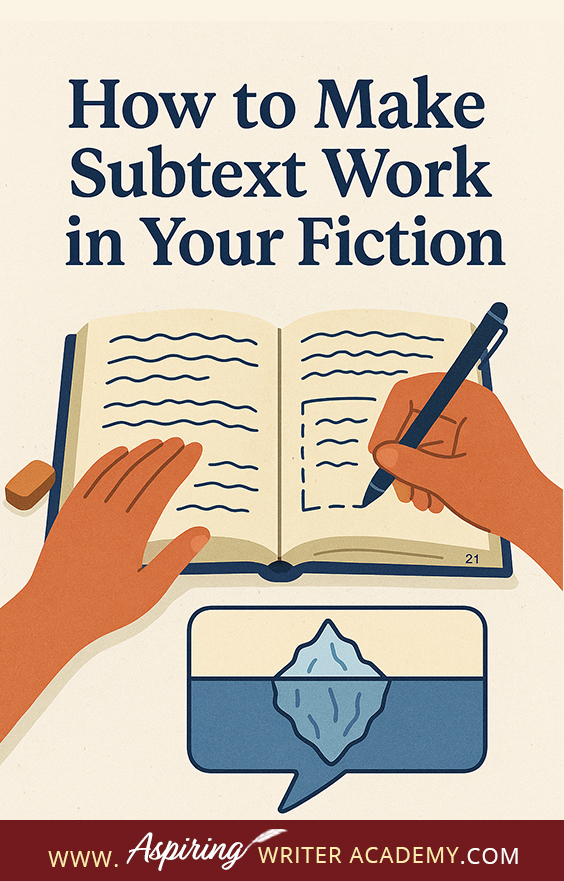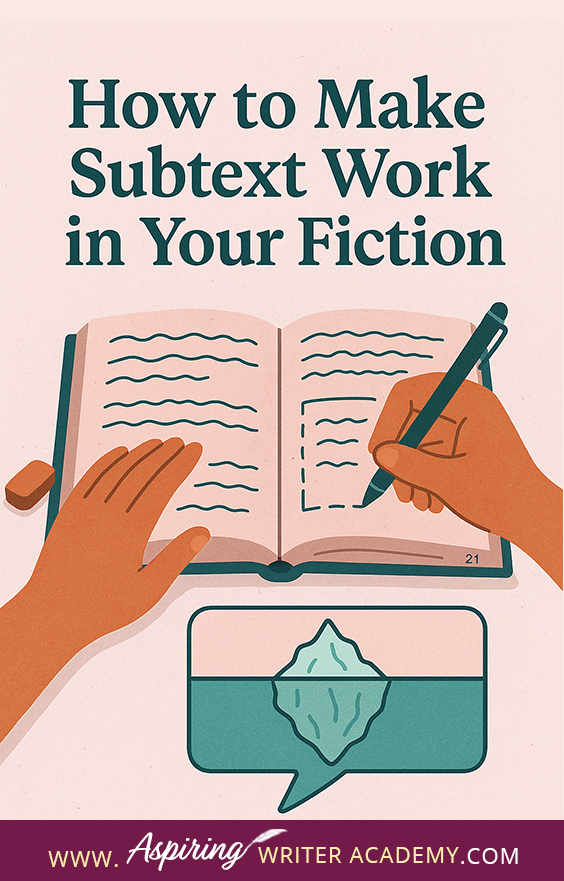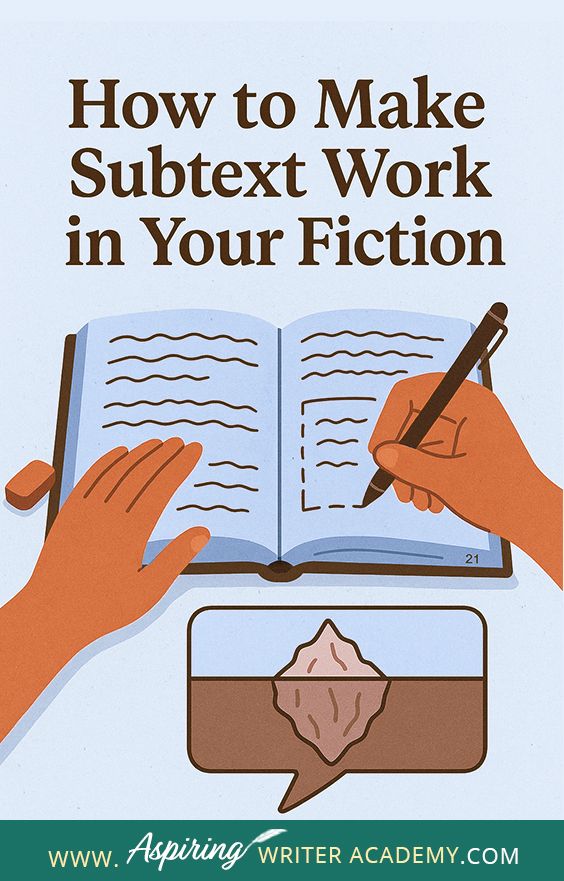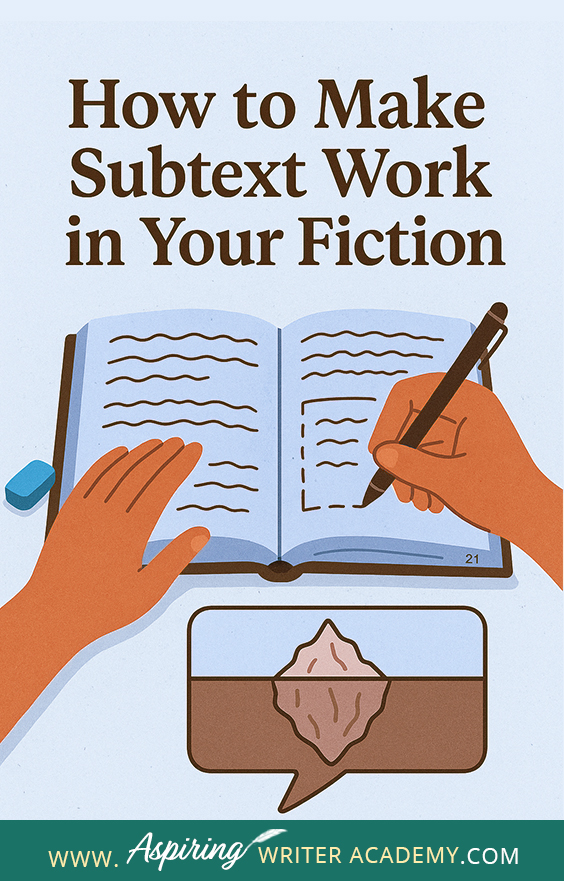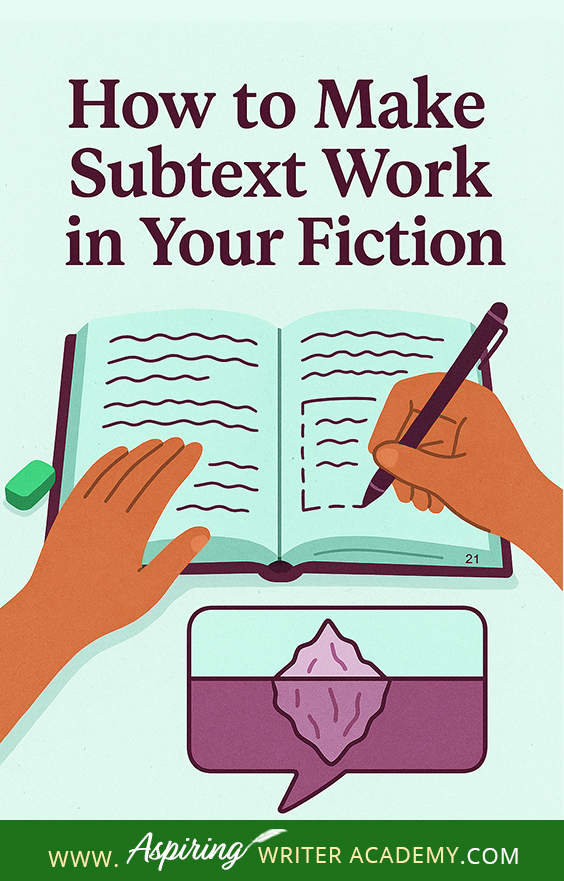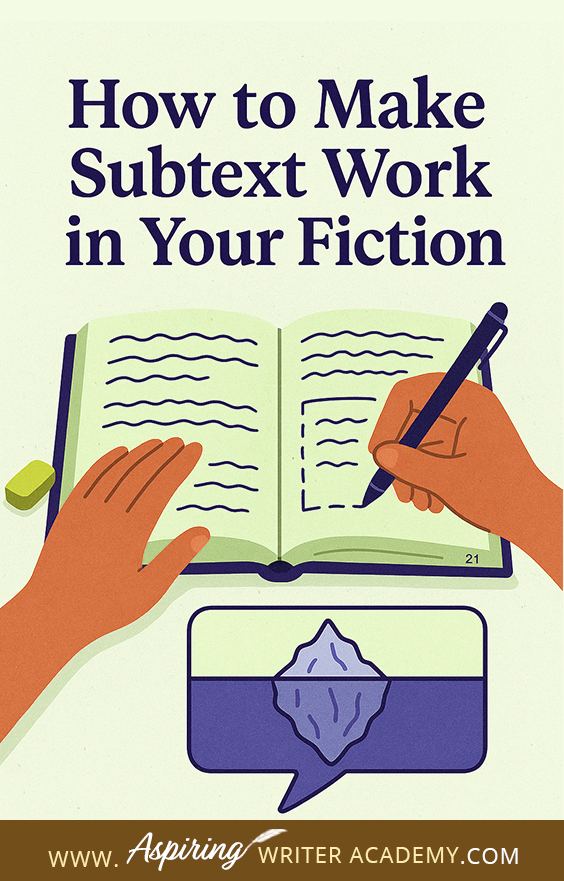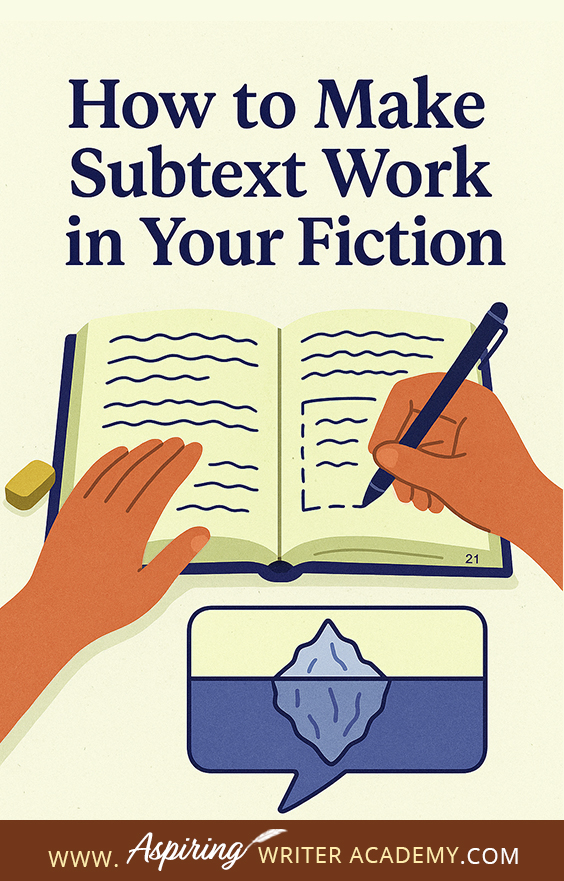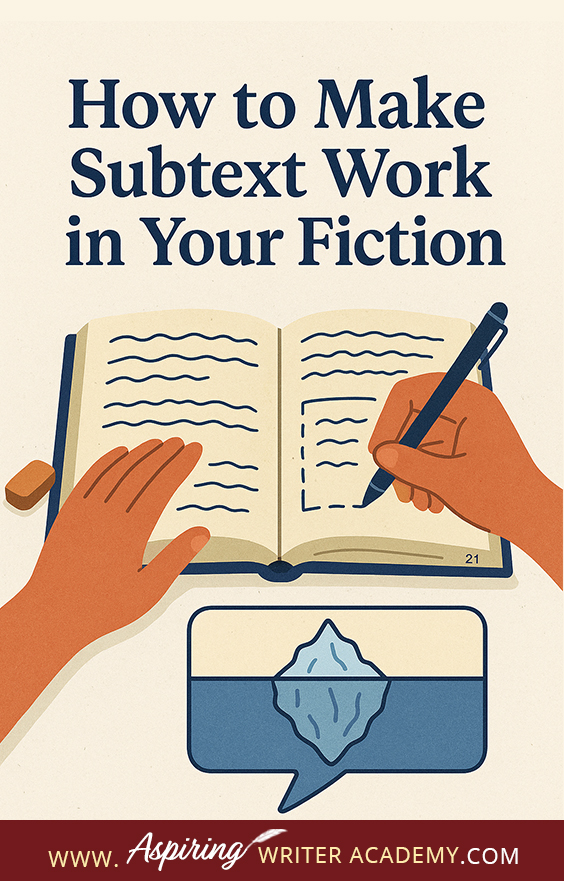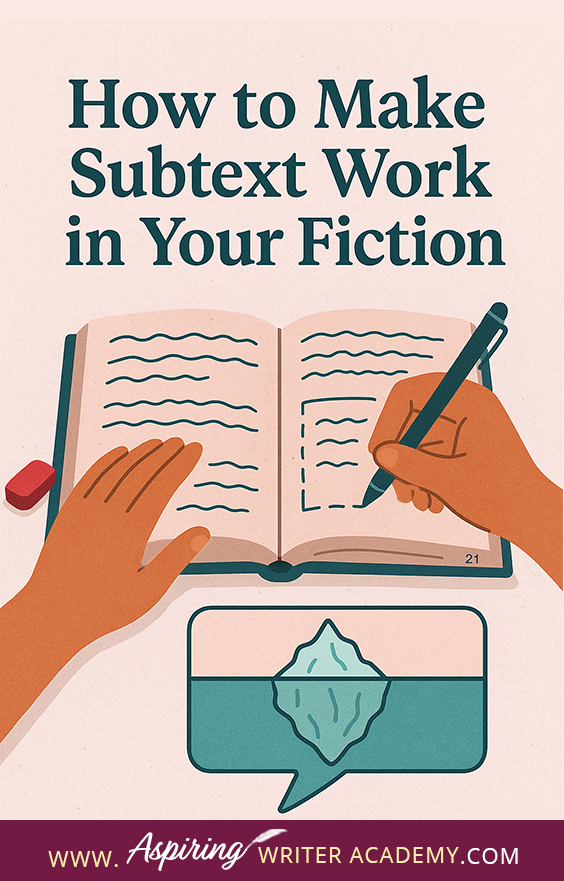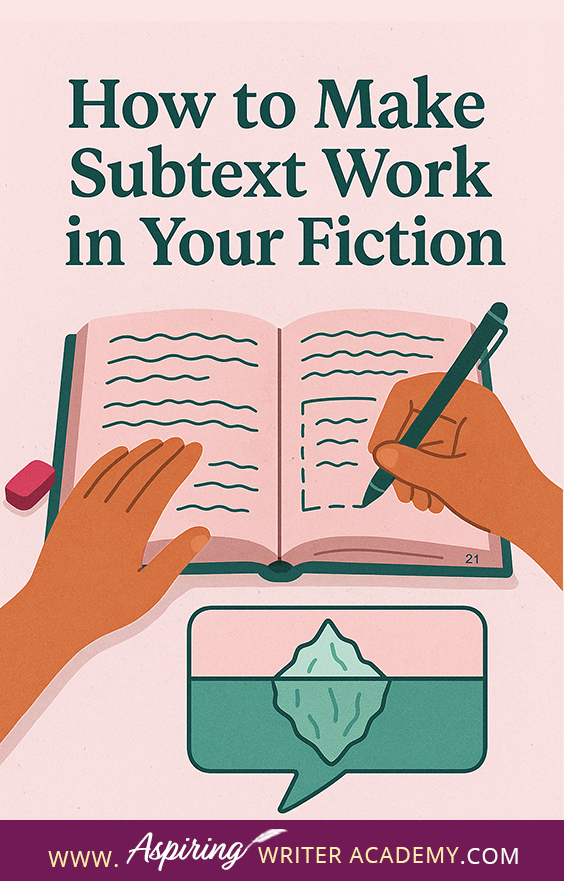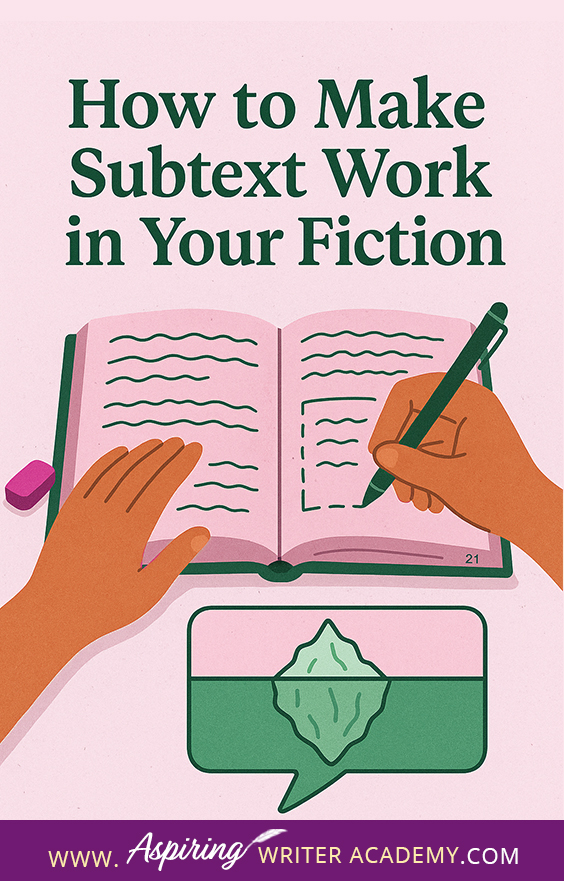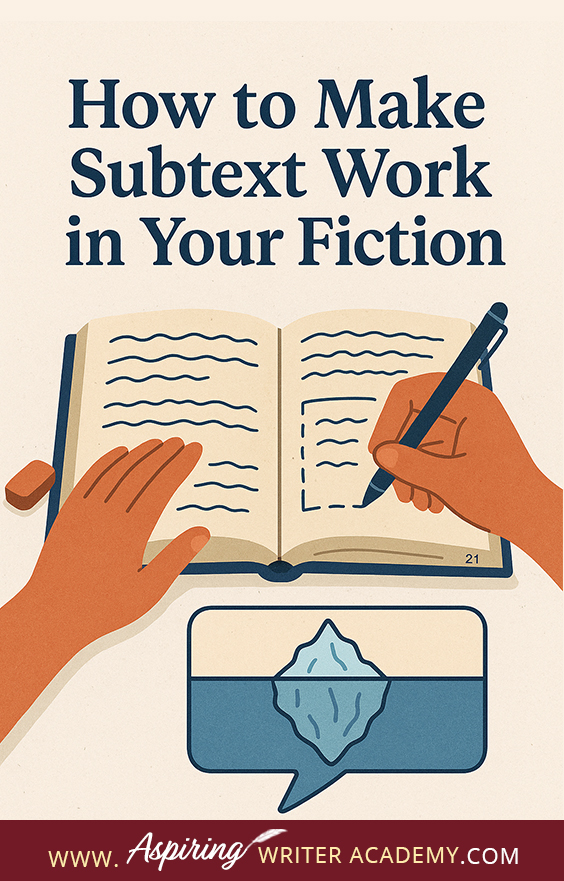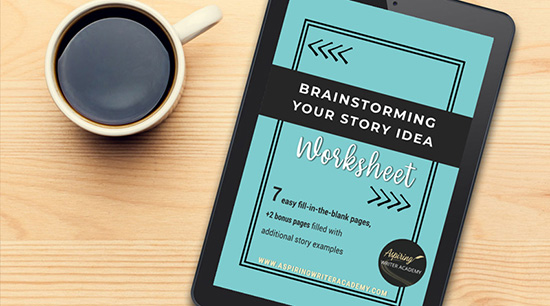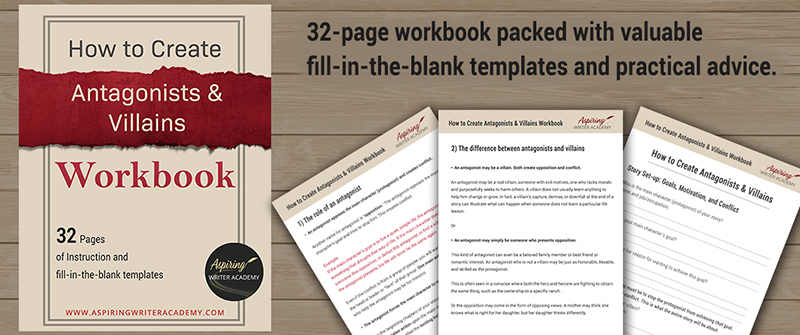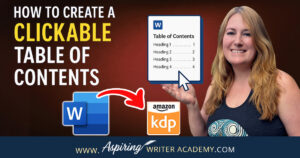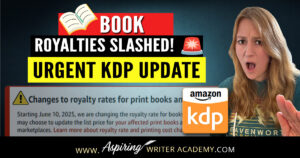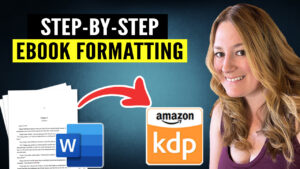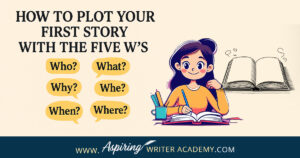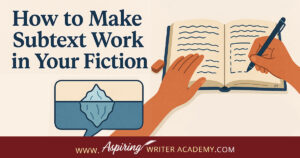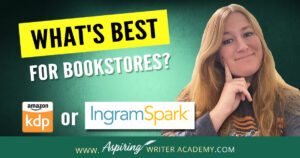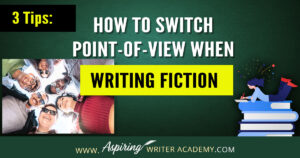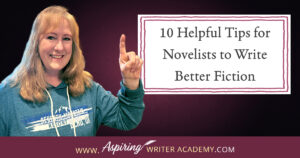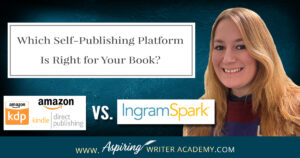How to Make Subtext Work in Your Fiction
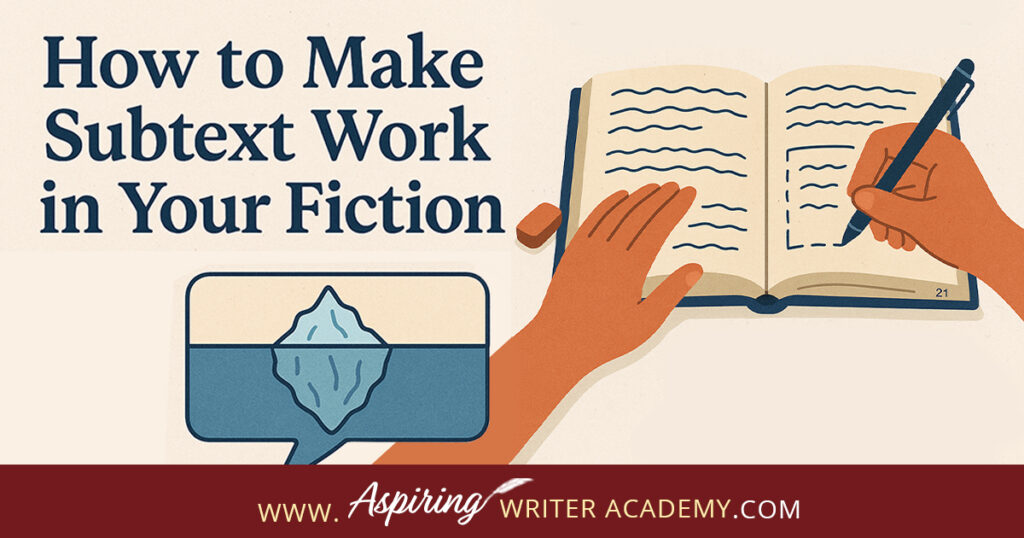
Subtext is the hidden meaning behind the words in your story. It helps you express feelings, conflicts, and desires without saying them outright, encouraging readers to look deeper. You can create tension with subtle dialogue and moments where silence speaks volumes.
In How to Make Subtext Work in Your Fiction, you’ll learn how to use subtext effectively to highlight your characters’ true emotions over what they say, making your story richer and more engaging.
Follow along as we discuss:
1) What is ‘Subtext?’
2) Examples of Subtext in Storytelling
3) How to Use Subtext in Your Fictional Novel
If you are new to writing fiction, your primary concern should be to get the rough draft of your novel written. Many people dream of writing a novel, but completing a novel is a monumental task. That is what separates true novelists, those serious about their craft, from the wannabes.
You can either write subtext into your first draft or insert subtext afterward, when editing and revising the story. This will give deeper meaning to the words on the page. But what exactly is subtext?
Let’s dive in!
1) What is ‘Subtext?’
It is how your characters act and feel despite the words that come out of their mouth.
It is the meaning beneath the dialogue that is understood by the audience.
🎯 Why Subtext Matters
Subtext helps you ‘show’ what is going on inside the character or in the scene without ‘telling’ the reader in a boring info-dump.
This heightens the tension in the story and peaks the reader’s interest.
🧠 Think About It:
People rarely say what they mean.
Think about conversations that you have had this week with family and friends.
🔍 Real-Life Examples of Subtext
Or would you use carefully crafted questions to try to pry out information about his whereabouts without letting him know you suspect?
While you may be dying to know the juicy details, you may realize asking is invasive and inappropriate.
So, you may ask beat-around-the-bush questions or drop ‘seemingly innocent’ comments, trying to get him to provide some answers.
What might you say to hint that you’ve been working extra hard, taking on additional projects for the company, and might need additional compensation?
Were you really mad that the postman was late delivering your mail or was there something else niggling at you making you vent your frustration on someone who didn’t deserve it?
What was your real motive behind the excuse?
What was really going on?
Example:
A woman wants her husband to mow the lawn.
The long blades of grass bother her to no end because she fears that snakes may lie hidden waiting to bite her as she walks across the yard.
But she does not feel comfortable asking or telling her husband to do this task.
❓ Why?
Perhaps she does not want to reveal her fear and be ridiculed.
Or maybe her husband has worked harder than she has this week, and she feels guilty asking him to do one more thing on her behalf.
Or maybe she is afraid he will tell her to do it herself.
 So what does she do?
So what does she do?
The wife may drop multiple hints to sway her husband to do what she wants without asking directly.



Then she may walk around the outskirts of the yard to retrieve an item instead of walking straight through.
When questioned by her husband, the wife may say:
-
“I needed more steps for my daily count today anyway.”
or -
“I don’t want the tall green grass to stain my new white sneakers.”

The real reason she is avoiding the long grass (which she desperately wishes her husband would mow) is because of her fear of snakes.
 Gestures, facial expressions, and actions can also provide subtext without a single word being spoken.
Gestures, facial expressions, and actions can also provide subtext without a single word being spoken.
Have you ever watched a scene in a movie where the characters do not talk for several long moments but the way they look at each other and interact through small facial expressions and gestures speaks volumes?

2) Examples of Subtext in Storytelling

Watching films / movies is a great way to study and analyze story structure because it usually takes less time to view than reading a whole book. Movies also give you a direct visual. Screenwriters, as well as novelists, use subtext to ‘unearth the unsaid.’ Let’s look at subtext in a few popular films:
 Example of Subtext from The Fall Guy (May 2024)
Example of Subtext from The Fall Guy (May 2024)
Starring: Ryan Gosling and Emily Blunt
Throughout the entire movie, a stuntman and his ex-girlfriend, whom he is trying to win back, discuss ideas for the storyline of the movie she is directing. On the surface, it appears they might really be brainstorming the plot for the script. However, that is not what is really going on.
They are working out their own relationship issues by discussing reasons for past mistakes, emotions, what they want now, and what they hope for in the future.
The ex-girlfriend-director wants a happily-ever-after but is not sure they can have one. The stuntman asks if she thinks the couple ‘in the script’ would be willing to try? He believes they can have a happily-ever-after. This back-and-forth banter between them happens through face-to-face meetings, phone calls, texts, all while the main action with explosions, fights, a car chase, a boat chase, and half a dozen other things are going on. This adds humor to the entire movie.
🌪️ Another Example: Twister (1996)
Starring: Helen Hunt and Bill Paxton
While they are chasing tornadoes, every line of dialogue has a double meaning. Yes, they could be talking about the tornado, but they are really talking about their own relationship.
At one point, Helen Hunt’s character, Dr. Jo Harding, says, “It’s too late. We can’t do this.”
Bill Paxton’s character, Bill Harding, who wanted a divorce at the beginning of the film, now coaxes that they can make it work.
On the surface, they could be talking about the machine with soda cans that they want to send into the tornado to obtain vital information that could potentially save lives. But the lines can also refer to their relationship, which they have been trying to work on fixing the whole time. What are the characters really saying to each other?
 Best Subtext in Catch and Release (2007)
Best Subtext in Catch and Release (2007)
Starring: Jennifer Garner, Timothy Olyphant, Kevin Smith, Sam Jaeger, and Juliette Lewis
Throughout the entire movie, not one character ever says what he or she really means. The movie relies heavily on body language (facial expressions and character actions), and what is not said, rather than what is actually said.
In the film, after a woman’s fiancé dies, she seeks comfort in his friends, learning his secrets while falling for his best friend.
After learning some of her fiancé’s hurtful secrets, Gray Wheeler hilariously spills some of her own secrets at the dinner table, proving her fiancé didn’t know everything about her either. She finds power in this moment and a certain degree of healing, which gains her a nod of approval from her fiancé’s best friend, who intuitively knows what she is doing and why.
💔 Emotional Subtext Moments
Another moment in the film, after Gray kisses her deceased fiancé’s best friend, they pull apart, and there are several minutes of back-and-forth body language as they realize they are attracted to each other, but feel it is wrong, and need to brush it off and pretend it didn’t mean anything. Even though it really did. Love this!
When another friend of the deceased fiancé, who has had a secret crush on Gray for years, finds out that she has been spending time with the best friend, he is jealous. However, he pours his frustrations out on a wooden door he is trying to level with a saw. Another friend wrestles him to the ground trying to find out why he is so out of sorts. Then Gray comes home with the best friend and the two other friends look at one another and the truth is revealed – that’s why.
The most poignant moment is when the best friend finds Gray sitting in the wedding dress she never got to wear. He says he is leaving to go back to California—without her—because, “we both know it’s going to be a long time before you can get out of that dress.”
What he is really saying is that she still needs time to grieve before she can make a commitment to him.
📝 Key Takeaway:
Look for the use of subtext in the books you read and the movies you watch, and create a list to help you identify these powerful moments.
3) How to Use Subtext in Your Fictional Novel
✍️ Write a Scene with Subtext
Write a scene or take an existing scene from your novel.
Do the characters speak to each other back and forth asking questions and responding in a direct manner?
🐾 Conveying Subtext Through Body Language
How can you rewrite the scene using body language to convey what the characters are thinking and feeling without speaking?
Think of how your cat or dog tells you what they want.
Does he wag his tail when happy?
Does he avoid his gaze when angry with you?
Does he give you big sad eyes when he feels guilty over something bad that he’s done?
Animals have an uncanny way of communicating without using human language. Your characters can do the same. What can they do to reveal how they really feel or hide how they feel without telling?
🔄 Contradictions and Evasion
Do their words contradict their body language?
Does their odd behavior suggest something is going on other than what their words suggest?
If two people in a restaurant are arguing over how much salt one should shake onto their food, are they really concerned about the salt or is one character angry at the other for other reasons?
Reasons he or she is not willing to share. Instead of addressing the real problem or spitting out the truth in a direct accusation or statement, which the character may not be ready to do yet, the character uses ‘salt’ to start a fight.
Because the character is angry but doesn’t want to say why.
🕵️♂️ Subtext in Secrets & Suspense
Also think about the point of the scene. Is one character trying to hide a secret?
What might he say or do to avoid having the secret exposed?
If one character asks how she is doing and she replies, “Fine,” even though it is clear from her expression and her nervous jiggling of the keys in her hand that she is not fine, what might the first character say or do to try to get her to reveal her true feelings?
⚔️ Using Evasive Language
Think about two characters fencing. How can each one dodge direct questions from one another? What kind of evasive language can they use?
If one character wants to find out if another character is in love with him, what might he say or do without asking directly? If the other character is in love with him but terrified to let him know, how might this character respond?
In a horror novel or mystery-suspense, how can one character threaten or blackmail another by implying but not actually stating the consequences? Maybe other characters in the background are punching their fists into their other hand or motioning a slice across the throat with their finger.
🔑 Key Insight:
What is not being said in a conversation is sometimes even more powerful than what is said.
🎯 Subtext Makes Characters Complex
Subtext also makes your characters more complex and interesting for the reader to follow. Readers love when they know why a character is doing something before the other characters figure it out.
Subtext gives depth and meaning to your characters, scenes, and the story as a whole.
We hope you have enjoyed How to Make Subtext Work in Your Fiction
and that you have learned what subtext is and how to use it to add more meaning and depth to your fictional novel.
If you have any questions or would like to leave a comment below, we would love to hear from you!
If you like more help developing your story, you may wish to download our Free Brainstorming Your Story Idea Worksheet
Do you find it difficult to create compelling antagonists and villains for your stories? Do your villains feel cartoonish and unbelievable? Do they lack motivation or a specific game plan? Discover the secrets to crafting villains that will stick with your readers long after they finish your story, with our How to Create Antagonists & Villains Workbook.
This 32-page instructional workbook is packed with valuable fill-in-the-blank templates and practical advice to help you create memorable and effective antagonists and villains. Whether you're a seasoned writer or just starting out, this workbook will take your writing to the next level.
We Believe All Authors Can Aspire to Take Their Writing to the Next Level!
Our Goal for Aspiring Writer Academy is to help people learn how to write quality fiction, teach them to publish and promote their work, and to give them the necessary tools to pursue a writing career.
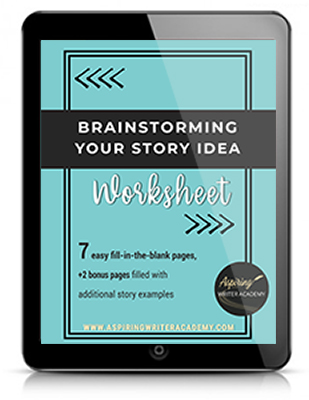
ENTER YOUR EMAIL BELOW
TO GET YOUR FREE
"Brainstorming Your Story Idea Worksheet"
7 easy fill-in-the-blank pages,
+ 2 bonus pages filled with additional story examples.
A valuable tool to develop story plots again and again.

is a multi-published author, speaker, and writing coach. She writes sweet contemporary, inspirational, and historical romance and loves teaching aspiring writers how to write quality fiction. Read her inspiring story of how she published her first book and launched a successful writing career.
